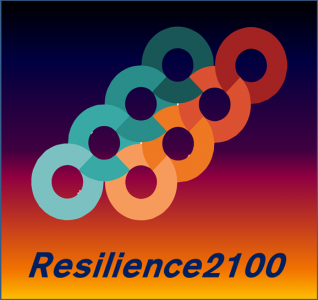I am developing a blog conversation with my colleague and friend Susan W. Kieffer, Ph.D. Planetary Sciences. She is writing about physical shocks and I am writing about shocks in communities. Her blog Geology in Motion will be her main medium, Resilience 2100 will be mine.
In the resilience parlance, we tend to think of shocks as sudden events that unravel our communities and infrastructure. An earthquake in a remote region of the earth might be just an earthquake. While an earthquake that impacts a community would be a shock.
The tendency is to think of these shocks as a one-time thing. Once the event is over, we’ll clean up the mess and put everything right – just the way it was before. A shock is an unfortunate thing that happens occasionally and we can sometimes lessen the impact of future shocks if we choose.
An interesting characteristic about physical shocks caught my eye in Sue’s post. She mentions that a shock, “a sudden change in the properties of a physical system,” is experienced in two different ways simultaneously. When referring to air shocks from a plane flying at high velocity she notes. “An observer on the ground experiences this [shock] as a sonic boom that quickly comes and goes. The shock appears to be moving to an observer on the ground, but to the pilot in the aircraft, it is stationary, attached to the rear of his aircraft.”

This difference in experience of shocks is a good metaphor for how communities experience shocks. Wealthy families with savings and/or access to credit can recover much more quickly from a flood than families with little-to-no savings or limited access to credit.
For example, Hurricane Harvey in 2017 caused more than 100 deaths and more than $125 million in damage from catastrophic rainfall that exceeded 40-inches in Houston, Texas. More than 48,000 homes were affected throughout Texas according to the Associated Press.
This flooding was catastrophic for many and a major nuisance for most. Yet some families had still not recovered from this shock years after the storm subsided
It seems that for some, this shock was something that “quickly comes and goes,” while for others, it has never left.
What causes this?
In future posts, Sue’s Geology in Motion blog will address compounding shocks – and I think that is a strong metaphor to understand why some folks are devastated and others only inconvenienced by the same event. Families and communities that suffer from multiple shocks need more time to recover. They are already in recovery mode from multiple previous shocks. And these shocks are not just physical shocks such as floods. The shocks can be social and economic shocks, too, While trying to recover from one shock, the second shock can extend recovery time, and a third shock on top can be devastating.
It’s like a prize fight, where one good punch can send a boxer back-peddling to allow for recovery, but if one, two, or three more punches land in quick succession, then that’s a knock-out.
In social systems that have hard-wired disadvantage for some ethnic groups or races, the punches can come in quick succession. But these punches may not land at all or with the same intensity on advantaged ethnic groups or races. For the advantaged, they can be like the pilot in the jet cruising at speed above the fray below.


Improving adaptive capacity of people, families, and communities is key to resilience. And key to improving adaptive capacity is to recognize the differential levels and experiences of shocks and to design community resilience strategies that seek to reduce time to recovery at the human scale. It is important, but not sufficient to make certain that economic institutions have the credit and resources they need. We need to also look down at a much finer grain to recognize and address the impacts of compound shocks on our communities. This is where the good work of groups like the Johns Hopkins’ Communivax project is important. The Communivax approach begins that finer grain of addressing the multiple shocks that make recovery most difficult for many.
As we are beginning to recognize, these compound shocks will be coming faster and faster as climate shifts baseline conditions, as storms get larger and more intense, and as social and biological systems try to recover from compound shocks.
